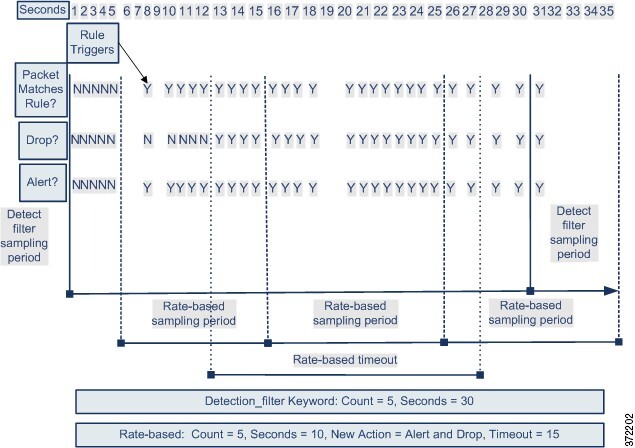detection_filter Keyword Example
The following example shows an attacker attempting a brute-force
login. Repeated attempts to find a password trigger a rule that also includes
the
detection_filter
keyword, with a count set to 5. This rule has rate-based attack prevention
configured. The rate-based settings change the rule attribute to Drop and
Generate Events for 20 seconds when there are five hits on the rule in a
10-second span.
As shown in the diagram, the first five packets matching the
rule do not generate events because the rule does not trigger until the rate
exceeds the rate indicated by the
detection_filter
keyword. After the rule triggers, event notification begins, but the rate-based
criteria do not trigger the new action of Drop and Generate Events until five
more packets pass.
After the rate-based criteria are met, events are generated and the packets are dropped until the rate-based timeout period expires and the rate falls below the threshold. After twenty seconds elapse, the rate-based action times out. After the timeout, note that packets are still dropped in the rate-based sampling period that follows. Because the sampled rate is above the threshold rate in the previous sampling period when the timeout happens, the rate-based action continues.

Note that although the example does not depict this, you can use
the Drop and Generate Events rule state in combination with the
detection_filter
keyword to start dropping traffic when hits for the rule reach the specified
rate. When deciding whether to configure rate-based settings for a rule,
consider whether setting the rule to Drop and Generate Events and including the
detection_filter
keyword would achieve the same result, or whether you want to manage the rate
and timeout settings in the intrusion policy.